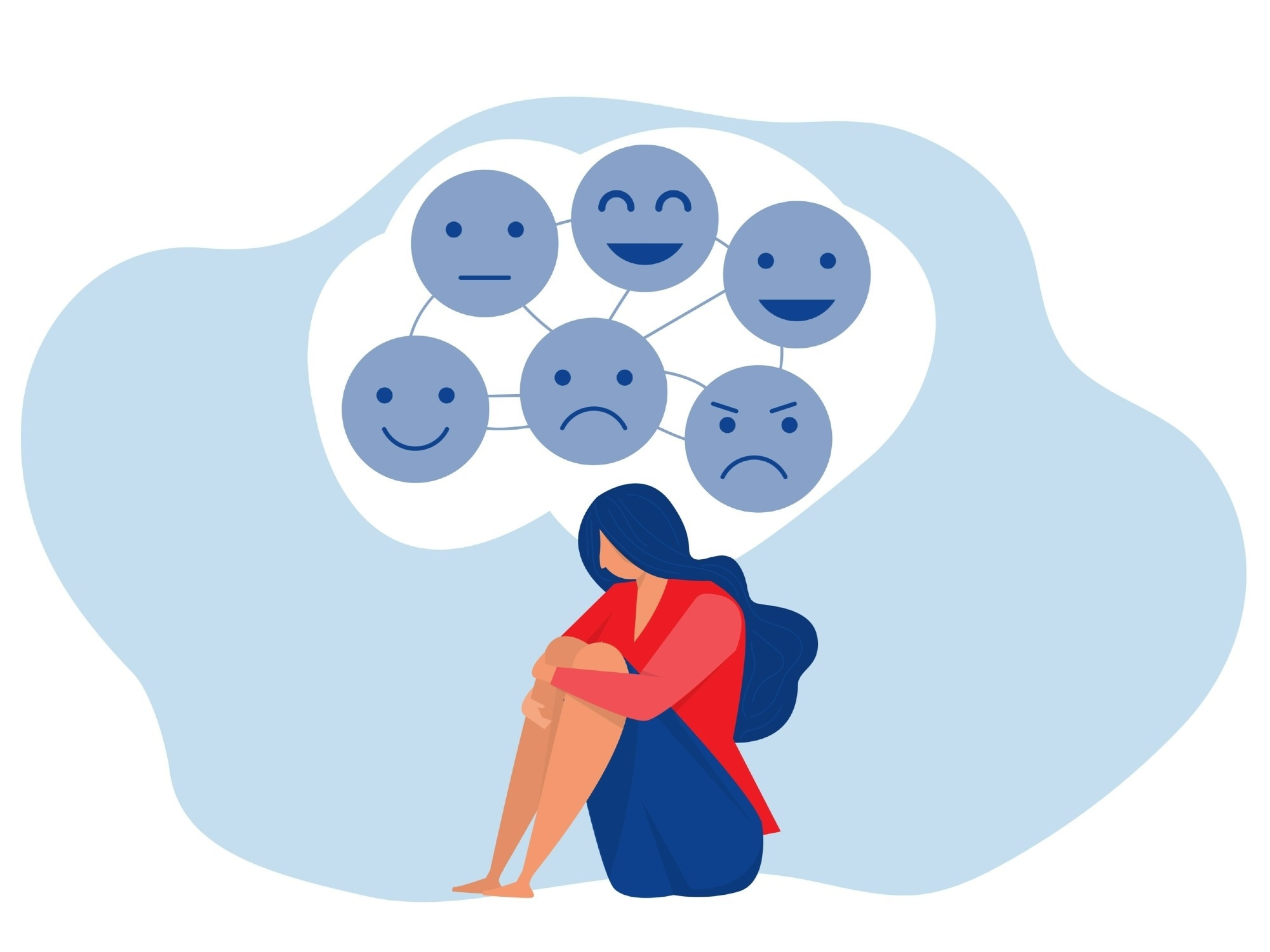User reported digital biomarkers
Online digital biomarkers
Brain implants
References
Further reading
Biomarkers are biochemical and biophysical indicators of disease that can be measured and quantified, allowing physicians to give accurate diagnostic and prognostic assessments. The field of psychiatry generally lacks readily available data relating to biomarkers within the brain, being difficult to perform investigative analysis on or collect samples from living brains.
 Image Credit: UnderhilStudio/Shutterstock.com
Image Credit: UnderhilStudio/Shutterstock.com
Behavioral data, however, can be collected and analyzed in relation to clinical psychiatry, particularly with the aid of electronic devices such as smartphones and wearable or implanted devices. Indications of disease collected passively from such devices, "digital health technologies," are known as digital biomarkers, which may describe a broad range of measurements. For example, monitoring blood glucose levels via an implanted device or tracking sleep time and quality using a smartphone app.
User reported digital biomarkers
Regular prompted surveys and smartphone notifications are useful in reminding a patient to perform positive behaviors and collecting regular self-reported information relating to symptoms. To some extent, this approach relies on a patient's memory of events or otherwise requires them to open an app and potentially describe their symptoms shortly after. Small events are, therefore, likely to be omitted from such reports, either being forgotten or too effortful to describe. Thus more convenient methods of submitting data would benefit both patient and researcher.
In a proof of concept paper by Stieger et al. (2020), a basic wrist-worn, button-activated accelerometer was utilized to conveniently submit data relating to the occurrence and intensity of symptoms based on the angle that the patient held their arm. Upon symptom occurrence, the patient needed to press a button and then hold their arm flat to indicate a low-intensity event or at any angle up to upright to report the most intense.
As the interruption burden of submitting data using this approach is significantly lower than using a smartphone app to gather the same data, it is hoped that patient compliance and reporting minor and frequent events will be advanced. In this pilot study, the group first tested participants' ability to estimate arm angles while wearing the device. It subsequently had them wear it for four weeks to track social media ostracization.

Image Credit: Kostenko Maxim/Shutterstock.com
Specifically, participants were asked to report every incidence of a message being sent and known to have been seen by the receiver where no response was forthcoming, rating the experience by the intensity of how ostracized they felt, and pressing the button once to indicate a single person ignoring them, twice for a group, and three times on a mandatory schedule to act as a baseline. This simple metric was chosen as a frequently occurring event common to most people on a day-to-day basis, and participants were engaged in various occupations, leisure activities, and living situations throughout the study.
Most participants were able to reliably estimate a 45⁰ arm angle, sitting around an average in a bell curve, and also found the device convenient to wear and mostly non-interfering in their current activity, though trouble using the device while driving or engaged in other activities requiring attention was reported, along with a decline in device engagement throughout the trial. As expected, participants felt the most ostracized when ignored by close friends and groups, confirming the usefulness of data gathered in this manner, which could be applied to tracking more pressing symptoms in psychiatric cases.
In the future, multiple buttons, interactive displays, and gestures could be utilized to allow a variety of events to be conveniently reported. Data collection relating to sensitive topics such as suicidal thoughts, self-harm, or racism can also be reported discreetly using such devices, removing the hurdle of actively describing or explaining feelings to another person or even writing.
Online digital biomarkers
A person's social media or general online activity could also be tracked as a passive digital biomarker, machine learning algorithms utilized to track for signs of depression or other psychiatric symptoms.
In another pilot study by Li et al. (2020), depressive feelings were monitored amongst the general and homosexual male community via Twitter and other social media platforms and dating apps by tracking the use of depressive language and post timing across hundreds of thousands of posts made by tens of thousands of users.

Image Credit: TA design/Shutterstock.com
For instance, an individual posting throughout the night may be suffering from insomnia, which is indicative of depression. Using this method, the group could identify individuals with probable clinical depression and highlight the occurrence of depressive episodes. Besides the high throughput nature of identifying digital biomarkers in this manner, another advantage may be greater transparency than a survey or questionnaire-based approach, where participants may obscure depressive behaviors.
Many depressive behaviors, alongside other psychiatric symptoms, are reflected in online social activities, and therefore it may be beneficial to monitor and identify at-risk individuals using these resources. In another example of this type of application Depp et al. (2019) explored the possibility of utilizing GPS tracking data to monitor the wellbeing of schizophrenia patients, finding that lower mobility was associated with greater negative symptom severity.
Brain implants
Implants capable of monitoring and remotely reporting information relating to brain chemistry and function is a probability in the near future. Such interfaces are currently under early-stage investigation utilizing 3D-printed parts.
For example, in a paper by Habelt et al. (2021) 3D printed devices featuring a fluidic channel and bearing multiple electrodes were implanted in rats, spanning both hemispheres of the brain to act as a neuroprosthetic interface, allowing the recording of electrical signals in the brain, and the detection of digital psychiatric biomarkers.
Psychiatric disorders can be highly variable regarding how symptoms are manifested, both between patients sharing the same diagnoses and on a day-to-day basis for the same patient. Digital health technologies allow continuous tracking of symptoms and better capture the constantly evolving experience of psychiatric patients. Thus, they may reveal previously unknown symptoms within particular conditions or help identify those with underlying disorders.
Further, if patient symptoms recognized through any digital biomarker can be correlated with environmental factors or the situation that caused the psychiatric symptom, they may provide greater insight into disease triggers and possibly inform future diagnosis and treatment.
References
- Habelt, B. et al. (2021). A Multimodal Neuroprosthetic Interface to Record, Modulate and Classify Electrophysiological Biomarkers Relevant to Neuropsychiatric Disorders. Frontiers in Bioenginerring and Biotechnology, 9.
- Vasudevan, S. et al. (2022). Digital biomarkers: Convergence of digital health technologies and biomarkers. NPJ Digital Medicine, 5.
- Li, Y. et al. (2020). Depressive Emotion Detection and Behavior Analysis of Men Who Have Sex With Men via Social Media. Digital Phenotyping. https://doi.org/10.3389/fpsyt.2020.00830
- Stieger, S., et al. (2020). The Sensor-Based Physical Analogue Scale as a Novel Approach for Assessing Frequent and Fleeting Events: Proof of Concept, Psychiatry. https://doi.org/10.3389/fpsyt.2020.538122
- Depp, C. A., et al. (2019). GPS mobility as a digital biomarker of negative symptoms in schizophrenia: a case control study. NPJ Digital Medicine, 2.
Further Reading